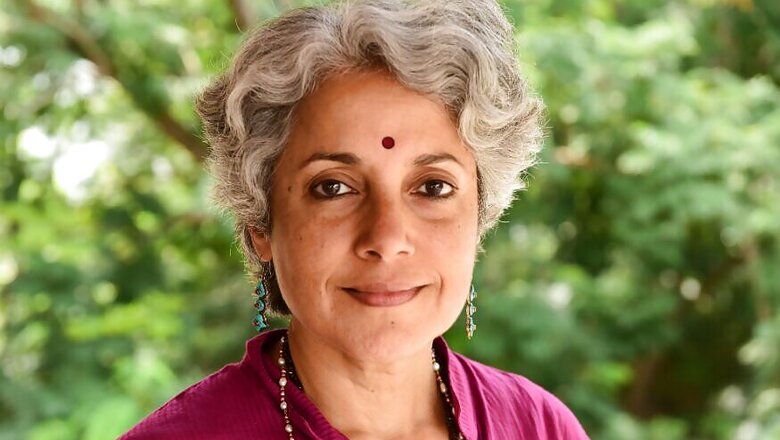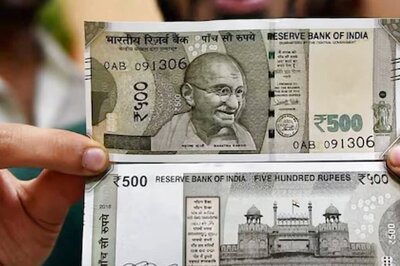
views
On December 11, News18 exposed how India’s clinical trials and drug discovery process is skewed towards diseases like cancer while ignoring the top killers of the country like TB, diarrhea and Kala Azar.
Responding to that, Dr. Soumya Swaminathan, Director-General of the Indian Council for Medical Research (ICMR) told News18 there was a need to support indigenous research in India.
In this interview to News18’s Aradhna Wal, Dr Swaminathan says India needs a 10-year vision on drug research. She feels there is an increasing awareness for supporting indigenous research and that scientists speaking out has helped the case. Excerpts:
Q) You tweeted recently that ICMR will work with pharma to develop drugs, especially for neglected diseases and to strengthen trial capacity. Could you elaborate?
ICMR is developing several initiatives, both generic and specific. An example of the specific work is the Tuberculosis Research Consortium we’ve set up. It’s a partnership between government ministries, private industries, foundations, trusts and global partners. We’re working with them on diagnostics, drugs and vaccines. Most of these discoveries, of vaccine or of drug candidates, happen in academic laboratories. However, it often takes a scientist years to move things further because such institutes don’t have the wherewithal and facilities of an R&D company. Funding is also a constraint. That’s why public sector drug development takes too long and you need your private sector partner who has facilities and is willing to put in resources. However, the industry is willing to come in only when there is proof of principle. As such, the industry is risk averse, they don’t want to spend a lot on the basic kind of research which scientists do for years to reach a particular point. We have these early discoveries happening and then we have the industry that is willing to take up something that has a proof of concept. A recent example is the dengue vaccine and drug being developed by Dr. Naveen Khanna at the International Centre for Genetic Engineering and Biotechnology (ICGEB). It was stuck for a while and they were desperately looking for industry partner till Sun Pharma stepped up for a partnership.
Q) But how do you keep the balance between science as a targeted mission and open-ended research that is very important for all scientific developments?
This is what we have to communicate very well. Most people only look at that one end-product, they ask for an output for the amount spent. But basic science or blue sky research, which is scientists following their dreams and ideas, cannot always result in a product. Science is incremental, every discovery adds to the body of knowledge and the next scientist uses that discovery. Like the gene editing technique - that was a method that was discovered and is now going to have immense application. Polymerase chain reaction (PCR) is another discovery that completely revolutionised diagnostics. You build on a body of work. It’s very difficult to say rupee for a rupee. ICMR is thinking of how to support both kinds of research. The industry will never support open-ended science so the government and its bodies have to, be it ICMR, Department of Biotechnology or the Department of Science and Technology. However, we also want to have mission mode projects, set goals and work in partnerships to achieve them. The TB consortium is an example of that.
Q) Can you give an example of important research stuck in academic labs?
Circumin is the active principle of tumeric. The compound has fantastic properties. Senior people like Professor Govindarajan Padmanaban from the Indian Institute of Science have shown that it works against cerebral malaria and against metastasis of cancer. These properties at the cellular level can be exploited. He’s been trying to get clinical trials for eight years. He’s a basic scientist and he can’t do trials at the IIS. Sometimes it’s not even a new drug, but a combination or a drug used for new indications. Trials cost a lot of money and you need infrastructure. Things get stuck and often people lose interest.
Q) What about neglected diseases, such as kala azar and Japanese Encephalitis. Don’t we need indigenous research for country’s own medical needs?
There is no commercial interest for diseases that affect the poor disproportionately. Right now the BRICS countries are discussing the same thing, and thinking of a BRICS network to address diseases of our countries. ICMR is one of the largest funders of neglected disease R&D in India, it funds 56 percent of the work. India’s neglected disease R&D is about $50 million a year. But we do need much more. One approach to these diseases could be repurposing compounds that companies have researched and given up on. Big pharma sits on many such big libraries, which they sometimes share. Novartis has an agreement with South Africa where the government uses its library of compounds the company is no longer interested in for commercial purposes, as long as the government doesn’t make money out of them. Pfizer and GSK have shared their libraries in the past too. There is also Dr. Sameer Brahmachari’s open source drug initiative, mainly for TB and malaria. One body needs to bring together these bits and pieces. Right now, there will be 50 researchers working on TB. The consortium will bring them together in our working groups. We haven’t yet brought in industry but companies such as Cipla are interested. Sun Pharma has a partnership with us on malaria elimination.
Q) What about Japanese Encephalitis, especially after the deaths this year in Malkangiri, Odisha?
Efforts in drug discovery for JE are negligible. ICMR had developed a vaccine for JE with Bharat Pharma, however the government is using a Chinese vaccine. We are now talking to the government to use our vaccine. Several of our institutes have worked on JE in Uttar Pradesh and Bihar. JE is a disease that will continue because of local conditions and because it’s zoonotic. However, the deaths in Odisha weren’t all because of JE. Further investigation confirmed some JE cases, some malaria cases but also found that some children had been eating seeds of the cassia occidentalis plants, which had a toxin. The ripe seeds are used in cooking but malnourished children, who can’t tell the difference, often peel and eat the raw seed. After a certain point the toxin causes hepato myoencephalopathy, where the liver starts failing, which leads to death. This was detected in Saharanpur a few years ago, and was found this year in Malkangiri. We have to see how we can prevent these deaths next year. However, even if deaths by JE have come down in the past few years, 100 children a year still die of Advanced Encephalitis Syndrome (AES).
Q) Why is there a lack of support for the country’s own bodies to do indigenous research? Is our public health policy leaning more towards privatising health care and research?
This isn’t a recent issue. Traditionally, health research has been low priority in the health budget. This year we got a little bit more but we need to double or triple our health research budget, if we compare ourselves to Brazil and China. The total budget of the department of health research is Rs 1000 crore, which works out to Rs 10 per head per year in the country. We’re not able to do all we should, projects get delayed, milestones are not met. The quantum definitely needs to go up but there is the issue of capacity. Will we be able to effectively spend an increased budget? Very few medical colleges in the country are able to undertake research projects. There are about 20 of them. We do have a long term plan to build capacity. Just as DST has schemes for human resource development, we have smaller schemes that I want to expand, so we can support young professionals. Training takes time, they will need mentoring. We need a ten-year vision.
Q) But is there support from the government for this vision?
There is a growing awareness. We have to do the advocacy and many scientists have been speaking up.




















Comments
0 comment